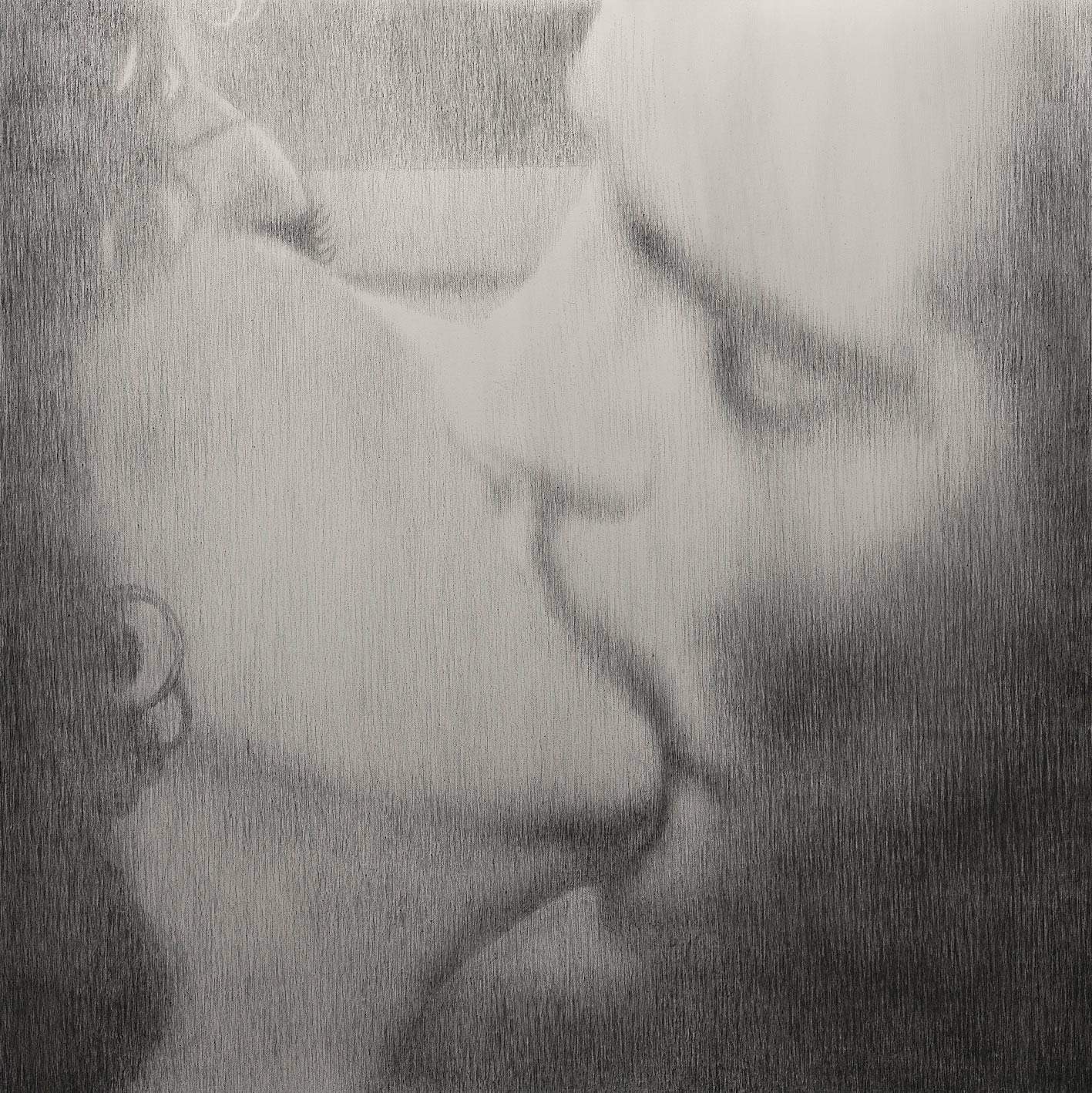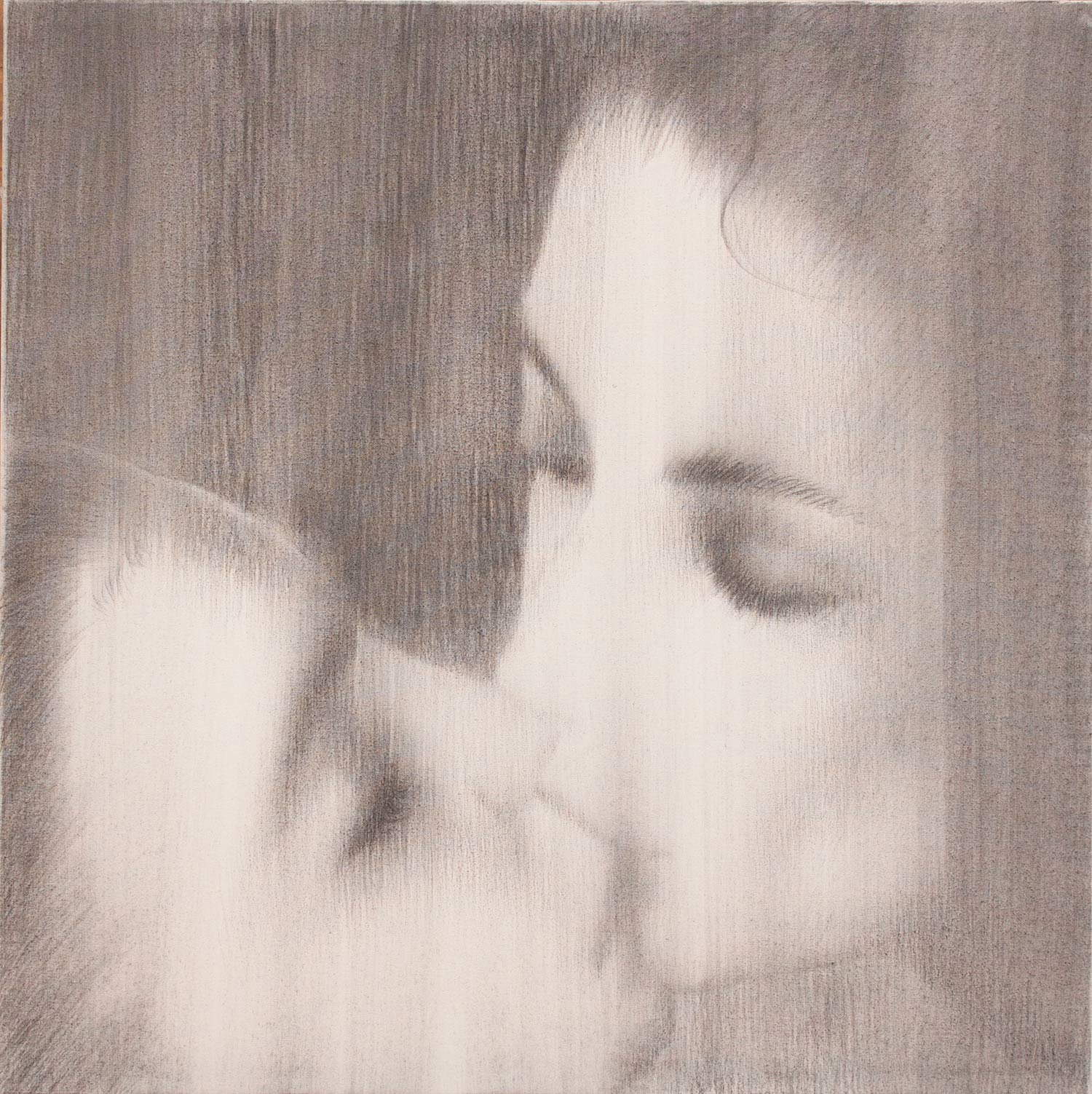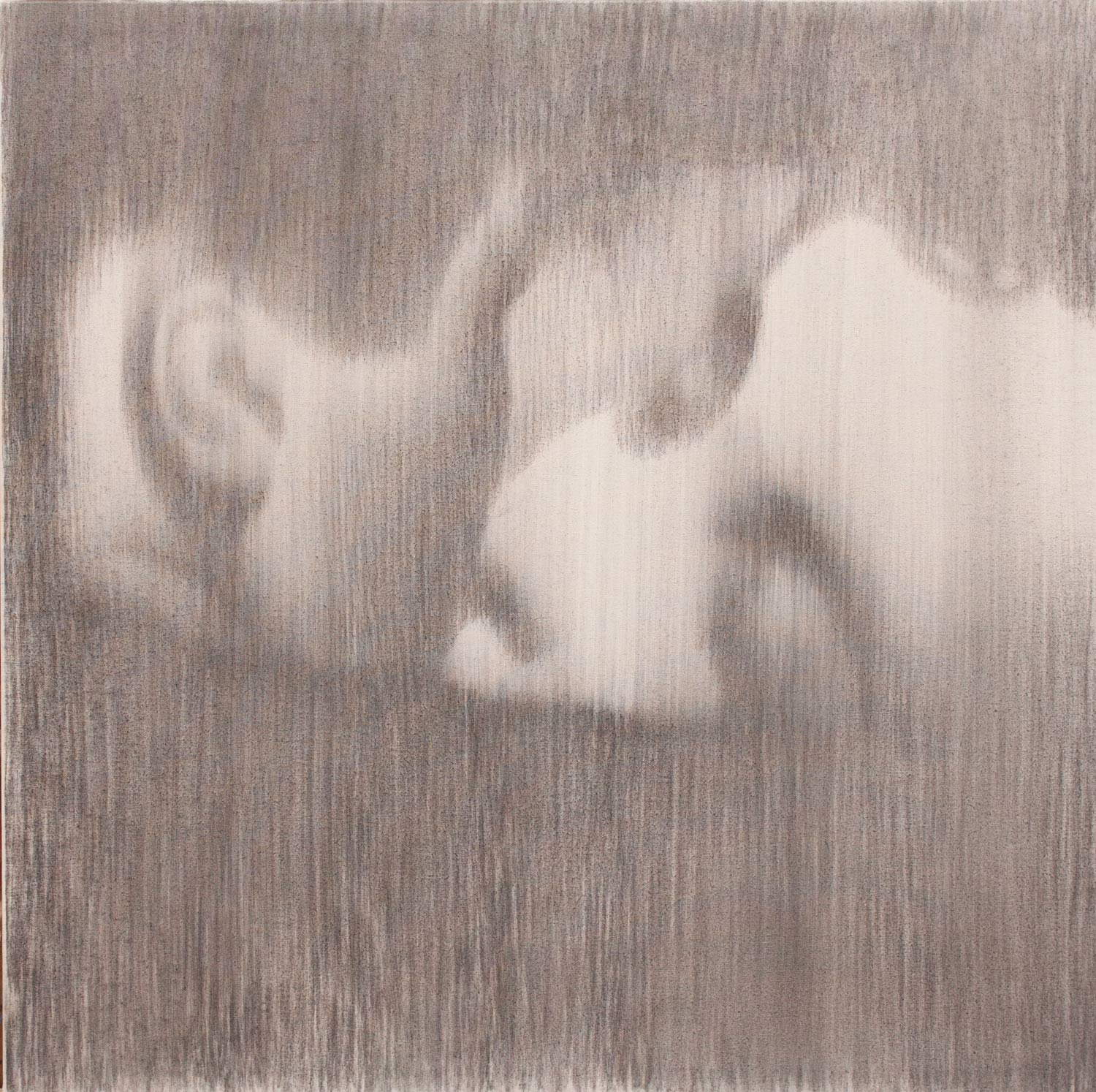The exhibition Baci rubati / Covid-19, a solo show by Omar Galliani (Montecchio Emilia, 1954), one of the best illustrators of recent years, opened until May 13 and will continue until July 2. The exhibition is held at the Florentine venue of Tornabuoni Arte and is intended to be a powerful expression of symbols: right from its title, the show brings back the terrible days of the first lockdown, days of isolation and denied relationships. Thus sixty drawings arrive in the exhibition, sixty stills of an everyday life deprived of gestures of affection that make up a fresco created, the artist himself recalls, “between March and June 2020 when the lockdown distanced us, in agonizing silence I searched for these images on the screens at home, recording with a freeze frame the tiles of this large mosaic drawn in pencil on canvas. They are the fragments of an everydayness orphaned of lips and breath, of caresses not given or received, of a latent darkness that has imposed itself in our daily life in a silent dramatic crescendo.”
In Galliani’s drawings, art is a way of giving back to people what the pandemic has denied them: physical contact. “Observing the paintings,” writes Sonia Zampini, who signs the introductory text of the exhibition’s catalog, “how the rush of vision is declined in kisses, embraces, reciprocities that arise as a response to thatanelity that forced separation has stifled. In this way larte restores form to the negation that the product of the times has generated. Artistic creation is itself born as a substitution of the real. Starting from this assumption, Galliani has taken up of reality not only the physiognomy but particularly the emotionalfflato that transcends it. The artist highlighted the need and the importance of recovering that dimension of human communion that becomes physical expression, a spontaneous and natural response to an urgency, to a state of necessity at the moment when these demands are denied.”
It is this necessity that drove Galliani to seek visions capable of describing contacts, and the same necessity, Zampini continues, “turned his attention to our contemporary windows that look out onto the world, such as the screens of the computer and the various devices pertaining to it. The place of the ethers, inhabited by multitudes of images contrasted, during the period of forced confinement, with the view that opened from the windows of our homes characterized by the deaf vision of anassence spilled onto empty streets. In this observing Galliani researched and took stills depicting people who by their standing next to each other visually celebrate an ideal closeness.”
“The multiple identities described by the succession of drawings,” Zampini concludes, “were conceived by the artist to be read moon by moon, like a great vision dinsieme that invests our gaze. The works stand between reality and desire, between will and limpossibility. To better highlight this flow between two opposing conditions Galliani has rendered, through the skillful use of graphite, the subjects evanescent to the eye as if they were generated by the same ethereal nature of dreams. Linsieme of the photograms, revisited by the artist’s hand, stages a kind of dialectic of repetition there where a nape of the neck, mouth, forehead, temple and more share the limit of their own form as they come into contact with their alter ego that stands next to them. The description of this ideal succession, in space and time, of a humanity spiritually united through the proximity of bodies, creates a contiguous and continuous visual condition that generates a deployment seemingly capable of emotionally rejecting the possibility of detachment and estrangement.”
“Now that the time of kisses and embraces is suspended between us and other desired bodies, where the skin and the time of caresses has been interrupted, we seek in the daily rush of images, a renewed caress that removes the time of absence and recasts desire for us,” observes the artist, who concludes his reflection with a shareable wish: Fiat Lux!
Omar Galliani was born in Montecchio Emilia on October 30, 1954. He attended and graduated from the Academy of Fine Arts in Bologna with Concetto Pozzati. He is invited to the first International Design Triennial in Nuremberg in 1979. Participated in three Venice Biennials, in 1982, 1984, 1986. Invited to 2 Quadriennali in Rome, in 1986 and 1996. Invited to the Paris Biennale in 1982, the São Paulo Biennale in Brazil in 1981 and the Tokyo Biennale also in 1981. In 1986, with the exhibition Aspects of Italian Art he exhibited at the Frankfurter Kunstverain, the Kunstmuseum in Hannover, the Kunstverain in Breghenz and in Vienna at the Hochschule für Angewandte Kunst. In 1998 New York University dedicated a solo exhibition to him. It is of the year 2000 the first solo exhibition Aurea in China at the Museum of the Central Academy of Fine Art which will be followed in 2003 by the invitation to the first Beijing Biennale won ex aequo with George Baselitz. Subsequently invited to the 2005 Biennale he will continue his Chinese tour touching the cities of Shanghai, Chengdu, Suzhou, Dalian, Xian, Wuhan, Hangzhou, Ningbo. This Chinese tour will then culminate with the 2007 exhibition Omar Galliani between East and West at the Fondazione Querini Stampalia in Venice as a special event of the Venice Biennale. The Uffizi National Gallery in Florence in 2008 acquired the triptych Nocturne for its collections. In 2017 Uffizi Director Eike Schmidt commissioned him to paint a self-portrait for the official collection of the Vasari Corridor, and inOctober 2018 the official presentation of the work was held in the Vasari Auditorium.
The exhibition is accompanied by a catalog with texts by Sonia Zampini, Omar Galliani and Roberto Mussapi, and can be visited at Tornabuoni Arte’s headquarters at Lungarno Cellini 3 in Florence. For more information you can visit Tornabuoni Arte’s website.
 |
| Omar Galliani, Stolen Kisses / Covid-19 #1 (2020; charcoal and graphite on canvas, 100 x 100 cm) |
 |
| Omar Galliani, Stolen Kisses / Covid-19 #12 (2020; charcoal and graphite on canvas, 100 x 60 cm) |
 |
| Omar Galliani, Stolen Kisses / Covid-19 #17 (2020; charcoal and graphite on canvas, 100 x 60 cm) |
 |
| Stolen kisses: Omar Galliani's drawings restore what Covid took from us |
Warning: the translation into English of the original Italian article was created using automatic tools. We undertake to review all articles, but we do not guarantee the total absence of inaccuracies in the translation due to the program. You can find the original by clicking on the ITA button. If you find any mistake,please contact us.